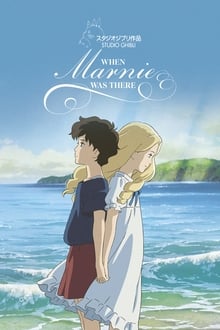
A woman sits alone on a chair at a table in a room on one of the top floors of an asylum. Bright spot lights dot the night, sometimes shining on her window. She sharpens pencils and writes on a page in a copy book. The pencil point often breaks under her fingers’ force. She places broken points outside the window on the sill. A satanic figure is somewhere nearby, animated but of straw or clay, not flesh. She finishes her writing, tears the paper from the pad, folds it, places it in an envelope, and slips it through a slot. Is she writing to her husband? “Sweetheart, come.” Written by
You May Also Like

Marla is forced to abandon her carefully structured life to embark on an epic journey to find her younger brother Charlie who has disappeared into the vast and wondrous animated world of Playmobil toys.

Beginning with the camera pointing toward the Invalides entrance, with the tomb of Napoleon in the background. The camera is slowly revolved until it rests upon the new and beautiful bridge of Alexander III, showing the immense crowds entertaining the Exposition.

Magic Tree House is a 2011 Japanese anime drama film based on the American children fantasy series of the same name. The film is directed by Hiroshi Nishikiori, and the film’s screenplay was adapted from the Japanese version of the novel series Magic Tree House by Ichiro Okouchi. The film stars actress Keiko Kitagawa as Jack, and also stars child actress Mana Ashida as Annie. Magic Tree House debuted at the 24th Tokyo International Film Festival on 23 October 2011. It was subsequently released in Japanese cinemas on 7 January 2012.

A woman escapes from a massacre in a motel bedroom.

Milagro knew she was adopted, but just found out there is no record of her birth parents. So her boyfriend Davis takes her on a camping trip to help her relax. As the trip progresses Davis reveals he is not as wholesome as he seems, and the truth to Milagro’s identity is hiding deep in the woods.

Upon being sent to live with relatives in the countryside due to an illness, an emotionally distant adolescent girl becomes obsessed with an abandoned mansion and infatuated with a girl who lives there – a girl who may or may not be real.

Babar is a young elephant in the great forest. Whilst out with his mother a hunter kills his mother and he flees to escape the same fate. He eventually finds himself in a human city and experiences the many differences between city and forest life. Treated as an outsider he is taken in by an elderly woman, dressed in fancy suits, taught to write and count and is brought up in human culture.

The story begins the day before the graduation ceremony. Five middle school girls each are preoccupied with their real everyday lives. These girls meet each other in a fantasy world after being sent there through a sudden occurrence. There, they learn about the impending crisis that this world is facing. The way to avert this crisis is for the five to collaborate and bring their five hearts together as one through dance. However, the five cannot come to love the world, and cannot tell their true feelings to one another, so their hearts are unable to unite. The time limit is fast approaching. Can the dance of the five girls save the world? And will they be able to graduate?

The story follows the love story of two volcanoes, Uku and Lele. It features a song, “Lava”, which is written by Murphy and performed by Kuana Torres Kahele and Napua Greig, who voice the two volcanoes.

A headstrong orphan discovers a world of spells and potions while living with a selfish witch.